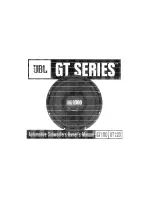
V.
ROOM ACOUSTICS, SUBWOOFER PLACEMENT, MULTIPLE SUBWOOFERS &
CONTROL SETTINGS
Room Acoustics
If you are critical about low-frequency response, there’s quite a bit of useful
experimentation you can do, especially in combination with the crossover, level,
and phase controls of our subwoofers.
Since the earliest days of high fidelity, one of the main challenges for the
designers of speakers, and of their users, has been management of the lowest
frequencies—the deep bass. Many of the most notable developments in speaker
design have been made with a view to getting more bass output from smaller
boxes.
One consideration is the size of the listening room. The larger the volume of air
a speaker must excite, the more acoustic output you will require from it to
achieve the sound levels you want. In any environment, sounds attenuate as you
move farther away from their source, but in smaller rooms that tends to be off-
set by reinforcement from wall reflections. The larger the space is, the farther
the sound has to travel both to reach the reflecting surfaces and then to get to
your ears, which means it has to be louder to begin with.
With traditional full-range speakers, that involves an intricate matching act
between amplifier power, speaker sensitivity, impedance and power handling.
But the bulk of the power goes to reproducing bass, so the use of powered sub-
woofers and separate midrange/treble satellites both allows you to be conserva-
tive in the amount of power your main amplifier produces, and ensures a good
match between the low-frequency amplifier and the woofer it is paired with.
After size, the most important aspect of a listening room is its shape. In any
room, sound reflects off the walls, ceiling, and floor. If the distance between two
opposite parallel surfaces is a simple fraction of the wavelength of a particular
frequency, notes of that frequency will bounce back and forth in perfect phase—
an effect called a standing wave or room mode.
At some point in the room, this note will be reinforced substantially; at others it
will cancel out almost entirely. If the prime listening seat is placed at either of
these locations, the note will be a horrible boom or virtually non-existent. The
standing waves are different between floor and ceiling, side walls, and end walls,
unless any of these dimensions are the same. An ideal listening room would
have no parallel surfaces—an unusual situation, to say the least—so that such
waves would not establish themselves. The worst kind of room is a perfect
cube.
Almost all rooms are susceptible to some standing waves at low frequencies,
but their effects can be minimized by careful positioning of both the speakers
8






































